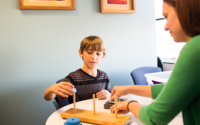Different Phases of Child Development Psychology
For all new parents, it is often an uphill task to understand the developmental phases of their child. There are a few social activities that we adults take for granted, but the child needs time to practice and explore them. That is why it is even more important for the parents to study the various phases of a child’s development. Attending some of the child psychology courses might help the modern parents to be caring towards their children.
The increase in the length of a child’s face, rigidity of the bone structure and the length of limbs are among the most easily noticeable physical development in an infant through the initial phase of its growth. Identifying the psychological changes and pinpointing their accuracy are even more difficult in a child. However, illustrating the various phases of Child Development Psychology is now possible due to the presence a large pool of research data shared by experts.
What is Child Psychology?
For the initial three months of a baby’s life, the youngster is essentially dedicated to building up its senses. The youngster will inspect and play with its hands – and with the hands of senior volunteers – to make sense of how they work and to figure out where the hands end and another person’s hands start.
Various stages of child development psychology involve specific activities like taking interest in games, laughing, and smiling. These are visible in children as they grow up to five months. A child learns to respond to various human emotions and shows his inclination towards a person till he reaches about eight months of age.
However, by the time he cover a year, he gains control over various organs like that of his legs and arms besides mimicking specific expressions.
What is the Best Way to Define a Child’s Developmental Phases?
A child’s development through the Phase of Infancy involves his understanding activities that take place between himself and others. An infant will investigate how its body functions and works towards indulging in social activities like games and language sharing, for example, uttering the kid’s name. Within five years of age, a kid is fit for understanding essential qualities of us humans and structuring comprehensive games with his friends.
As the kid ages, his capacity to comprehend and feel for others expands, which often encourages his collective involvement in social settings. When a youngster gets into adolescence, he understands his responsibilities as an individual and remains thankful to others. It is during adolescence that a kid starts to investigate the less effectively perceivable mental differences kids and grown-ups, and the comprehension of one’s self maximizes during the high school years. All of the stages mentioned above can help you understand the overall development of a child.


